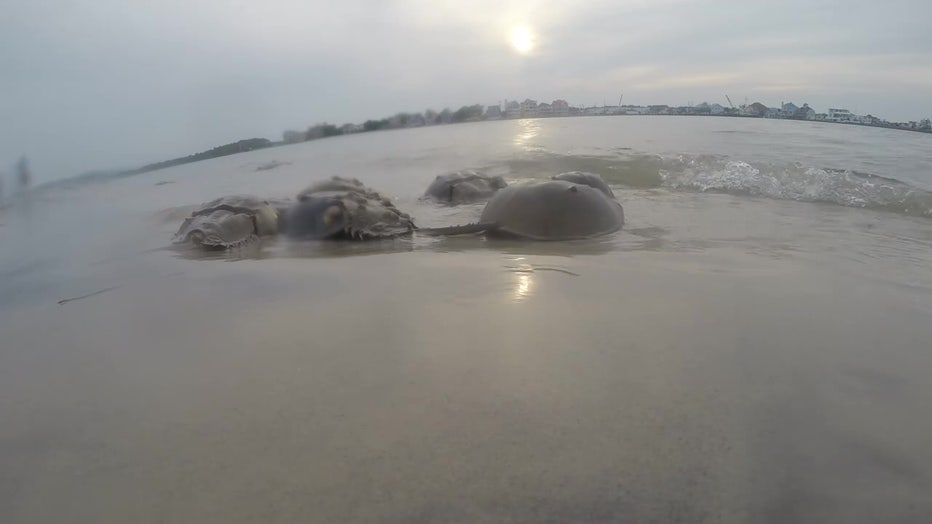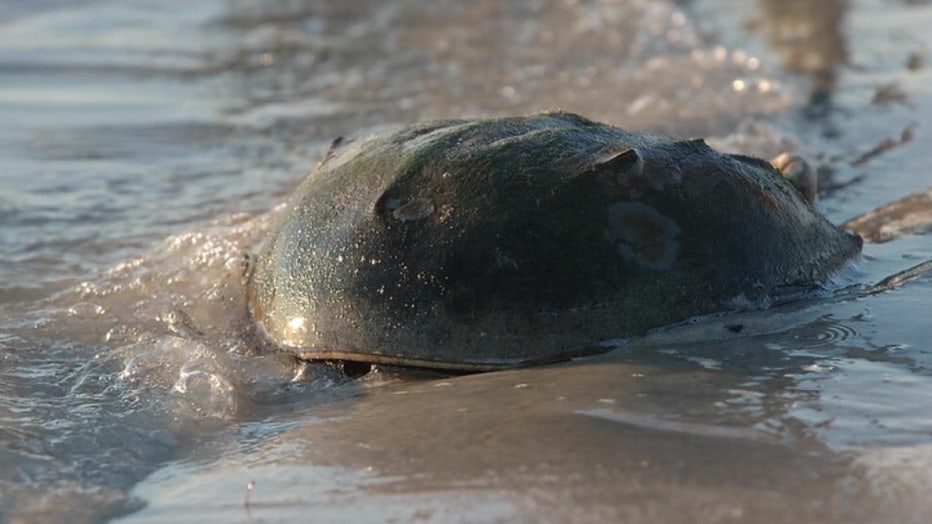Wildlife officials looking for help finding horseshoe crabs along Florida beaches
TAMPA, Fla. - The Florida Fish and Wildlife Commission is looking for your help with its annual Florida Horseshoe Crab Watch.
The FWC said the spring is peak mating season for horseshoe crabs, a population that researchers say has been around for more than 450 million years.
The study is happening at beaches around Florida, including beaches in Pinellas, Sarasota, Pasco and Hernando counties, according to researchers.
RELATED: Spotted a horseshoe crab? Florida wildlife officials want to know
They said horseshoe crabs are a crucial part of their ecosystem and can withstand some extremely rough conditions.
Horseshoe crabs typically mate along the shore of sandy lower-wave action beaches in March and April, the FWC said.

Some people out on the beach in Pinellas County have already started seeing them.
"Kind of at the water’s edge," Stephanie Hoff, a beach goers in Pinellas County, said. "So if the wave were to come up and reach its end point in the sand, they seem to kind of be along there."
MORE: Manatee County picks up 7,000 pounds of dead fish after red tide blooms
The Florida Horseshoe Crab Watch is targeted at counting, tagging and studying the population.
"There seems to be a smaller amount on the Gulf side, potentially from Red Tide events and all of that," said Berlynna Heres, a research associate with the Florida Fish and Wildlife Research Institute.
Heres said long term, preliminary data shows a decline in the horseshoe crab population on the Gulf, pointing to the primary reason for the decline.

"Is shoreline hardening?" Heres said. "They spawn on sandy beaches, so if you put up a seawall, there’s no beach for them to spawn on and their population just slowly disappears. It can’t replace itself."
If you see them flipped over on the beach, Heres said to flip them back over to help them.
READ: 11-foot, 1,200-pound great white shark pings off coast of Florida ahead of spring break
"That actually is very helpful for them," Heres said. "Make sure you pick them up by the main part of their shell. Not their tail."
Heres says they’re working to expand the study further into Pinellas County, as well as to Picnic Island in Hillsborough County.
Anyone who sees a horseshoe crab is asked to report it with the FWC, because they rely on the public's help to complete the study. To report a sighting, click here.

